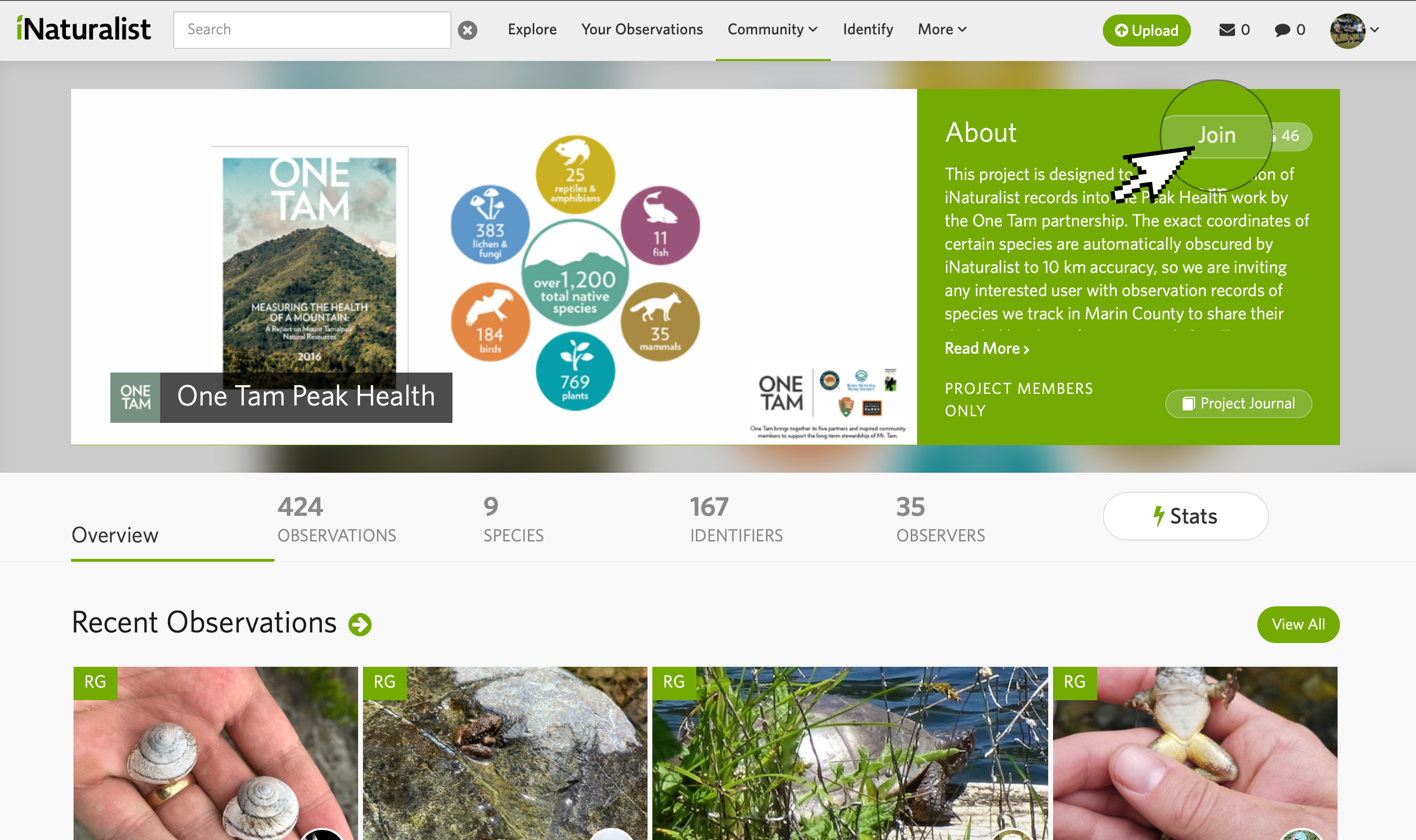Overview
Have you ever seen the elusive California Giant Salamander (Dicamptodon ensatus)? This California endemic amphibian is one of the largest terrestrial salamanders anywhere, reaching 6-12 inches. Beyond their size, they are also identified by their blotchy brown coloring, with white to yellow underside. Although not federally listed, the California Giant Salamander is considered a special status animal in need of conservation. They live year-round in headwater streams and adjacent riparian areas and are excellent indicators for the health of these habitats.
The Mt. Tamalpais region supports California Giant Salamander populations in various streams, and while we have some knowledge of their distribution, we need more information to understand and protect them. This species was identified as a knowledge gap in our 2016 effort to understand the health of the mountain, called Peak Health. To help fill this gap, we are using crowd-sourced observations from iNaturalist.
Join this project
You can help the salamanders by submitting your observations via iNaturalist and joining the Peak Health project or by emailing us your observation. See how below.
If you already joined the project, please double check that you have selected "yes" to “Trust this project with hidden coordinates?”
We prefer that you submit an observation on iNaturalist using the steps below.
> I’m new to iNaturalist:
- Make an account.
- Follow the steps in the video tutorials here to submit your photo via the app or your web browser: https://www.inaturalist.org/pages/video+tutorials
- Follow the steps for “I’m already on iNaturalist”
> I’m already on iNaturalist:
- Go to https://www.inaturalist.org/projects/one-tam-peak-health/join (You will be asked to sign in to your iNaturalist account before proceeding.)
- Click the join icon on the top right corner of the project page.
- When a new page opens, look near the bottom, you will be prompted with “Trust this project with hidden coordinates?” Select one of the “yes” options.

Screenshot of where to click to join the project in iNaturalist.

Screenshot of where to select "yes" to trust your coordinates with this project.
> I already joined the project, but I was asked to share coordinates again.
- Go to: https://www.inaturalist.org/projects/one-tam-peak-health/join (You will be asked to sign in to your iNaturalist account before proceeding.)
- Click the membership icon
- When a new window opens, you will be prompted with “Trust this project with hidden coordinates?” Select one of the “yes” options and click “Save”

Screenshot of where to select membership icon.

Screenshot of where to trust project with hidden coordinates.
> Submit via email:
- Write an email to communityscience@onetam.org
- Use the subject line: Giant Salamander Observation
- Include the following details in your email:
-Date you saw the salamander
-Approximate location of the salamander
-Life stage of the salamander - adult, larva, juvenile
-Was the salamander alive or dead?
-Did it appear sick or hurt in any way?
-If you have any photos or video, please attach
FAQs
Why does iNaturalist obscure coordinates? iNaturalist automatically obscures coordinates to protect threatened taxa, like California Giant Salamanders, or when users choose to obscure coordinates. You can read more here: https://www.inaturalist.org/pages/geoprivacy
How are you using the data? The data will be used to make a map of salamander occurrence, to estimate approximate salamander age, to document behaviors, and to detect instances of sick or dead salamanders. This information will be summarized and shared with One Tam partner agencies to assess the health of California Giant Salamander populations on Mt. Tamalpais and inform possible conservation actions.
Who will have access to the data with specific coordinates? Dr. Lisette Arellano, Senior Program Manager at the Golden Gate National Parks Conservancy, is leading the project and supervising interns and other staff with access to the data. Data will be shared with staff scientists and decision makers at the National Park Service, California State Parks, Marin County Parks, and Marin Water.
What if I see a dead salamander? Please share it on iNaturalist!
Can I volunteer to go catch salamanders with you? We do not have a field-based salamander monitoring program. Please respect salamanders and their habitat and continue to share your photos via iNaturalist.
If you have additional questions, please reach out to our team at communityscience@onetam.org


